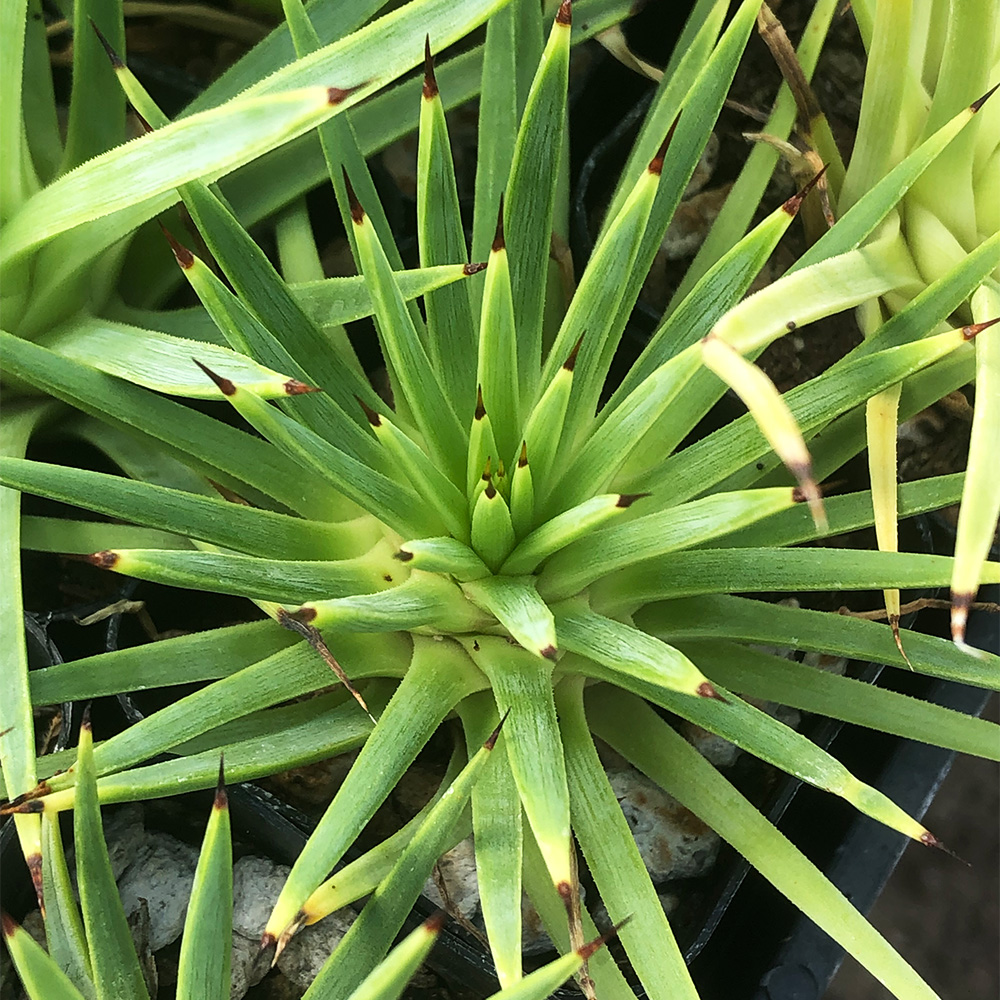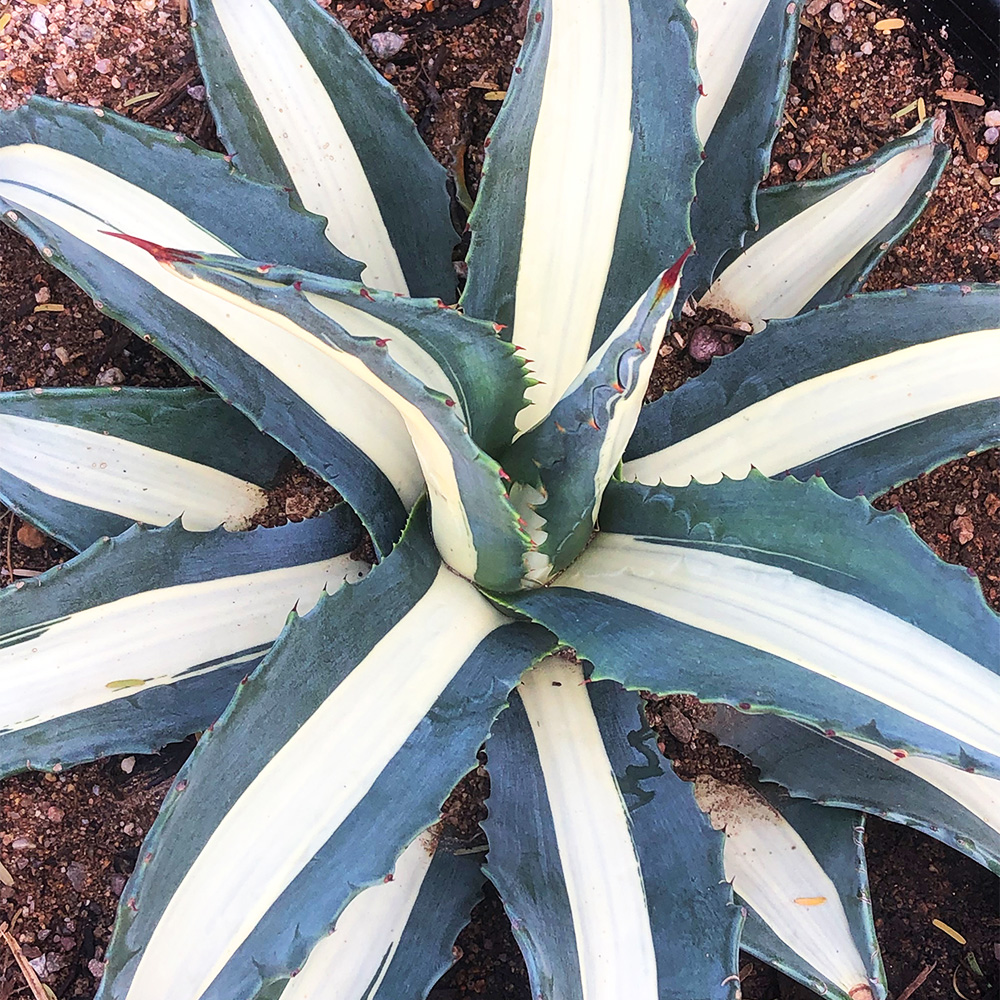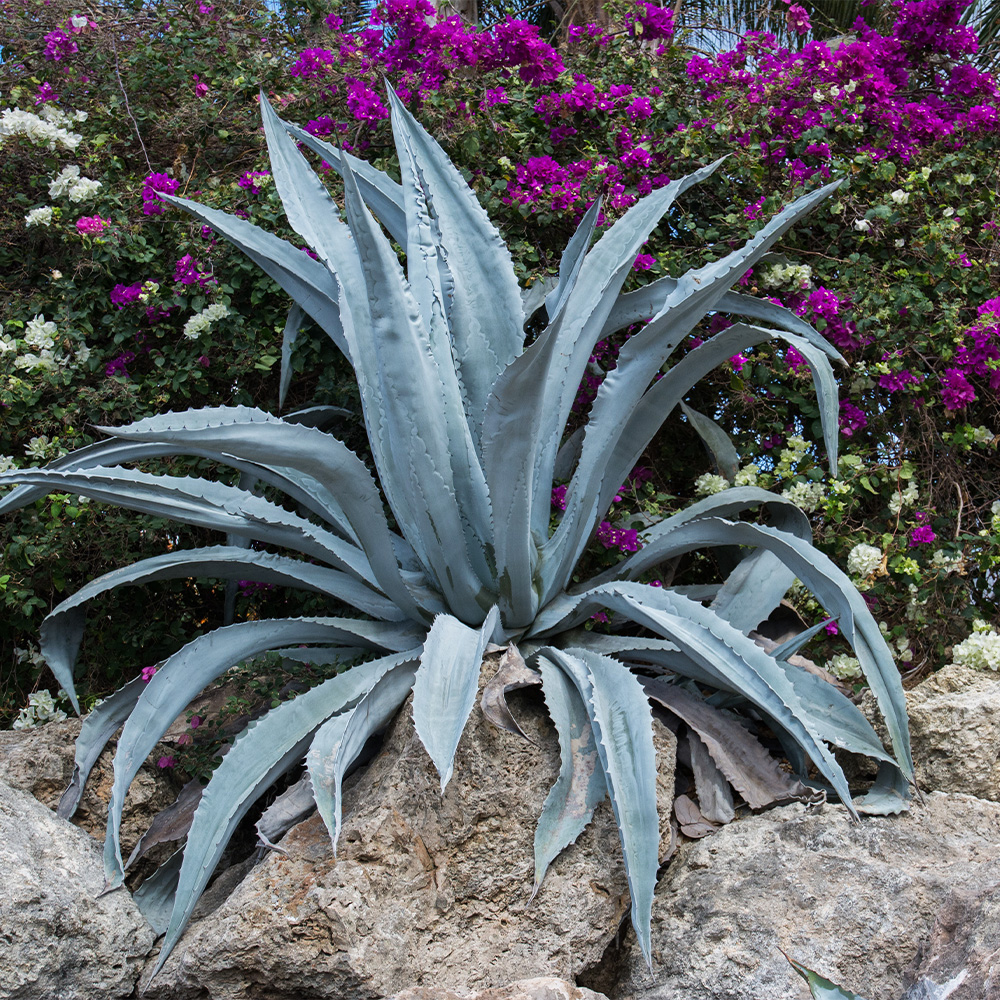Native to the Americas, dramatic Agave is the perfect companion for the California landscape. Along with its striking leaves and architectural form, Agave is astonishingly drought-tolerant and fire-resistant, important qualities for west coast landscape plants.
About Agave
Although leaf shape and color may vary, Agave leaves always radiate from a central point in a symmetrical rosette. The leaves are succulent and, most often, pointy at the tip. Some varieties have smooth leaves while others possess leaves with teethed margins. Leaf color can range from deep green to bluish green to silvery blue to gray. Some varieties offer variegated leaves with yellow or white lines or edges. Agave is also available in a wide-ranging assortment of sizes from impressively enormous to dainty and small.
Grown primarily for its distinguished appearance, Agave does flower. The flower stalks tend to be imposing compared to the overall size of the plant and it may take years, even decades, for an Agave to bloom. Flowers may be branched, similar to a tree, or unbranched. The flowers will form seed pods or bulbils, necessary for reproducing the plants. Once an Agave flowers, the main plant will die. But the plant leaves behind clones for propagating new Agaves. You may prevent Agave from flowering by cutting off the flower stalk as it begins to form. Agave flowers are an important source of nectar for pollinators such as hummingbirds and bees.
Growing Agave
Whether grown in the ground or containers, whether grown as a specimen or grouped in drifts in the landscape, Agave requires a full sun site – direct sun – and prefers a low-humidity environment. Poor soil is not a problem and Agave can tolerate nutrient-deficient soil quite well once established. Give your Agave a good start by amending the native soil with a bit of high-quality compost. This will help increase drainage, as sharp drainage is essential. Adding gravel or chicken grit to the planting area is also helpful. Fertilize lightly. Although succulent, and therefore drought tolerant, watering of Agave is infrequent but occasionally necessary, more so for potted plants than those in the ground.
Types of Agaves
With Agave, there seems to be an unlimited selection of colors, shapes, forms, and sizes to choose from. Stop by your local independent garden center to sample their offerings.
With so very many Agaves to choose from, it is hard to select our favorite varieties, but here we go…
- American Century Agave
Its large size, 6 to 12 feet high, and narrow, long, wavy leaves make this an irresistible Agave for the west coast landscape. With desirable blue-green foliage, this Agave is exceptionally winter hardy to the low teens. - Blue Agave
Blue Agave is where tequila comes from. As the name implies, this Agave has beautiful blue foliage, and it can grow an impressive 8 feet high by 8 feet wide. - Mountain Agave
This lovely, apple-green agave with reddish-brown teeth grows up to 4 feet tall and 5 feet wide. Mountain Agave prefers full sun but will tolerate a part shade location and will grow best in soil that is well-drained, rich in organic matter, and regularly irrigated. - Queen Victoria Agave
A most beloved dark-green, toothless Agave of manageable size, about 18 inches in diameter. The leaves sport attractive white markings on their sides and have a spike at their tip. - Fox Tail Agave
A lovely, slow-growing Agave that will eventually grow to 4 feet high and looks like a blossoming flower with graceful, undulating, silvery-green leaves. The leaves have no teeth or terminal spine, making this Agave a dream to plant and care for. This Agave will tolerate moist or dry, well-drained soil.
Astonishing, dramatic, colorful, easy-care Agave will make a spectacular statement in your dry west coast garden, whether planted in the ground or containers scattered throughout the landscape. Have fun experimenting with new and exciting varieties.



